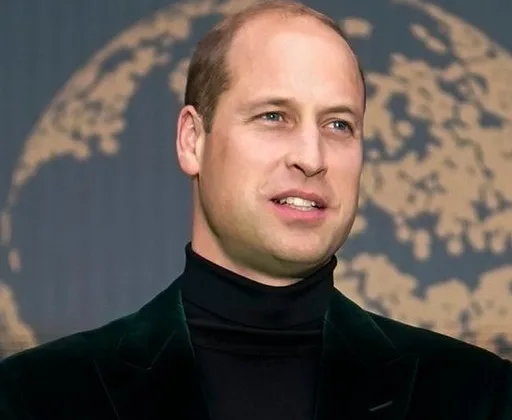At a Buckingham Palace garden party, Prince William revealed that he reads inspirational books to his youngest son, Prince Louis, as part of their bedtime routine
During a Buckingham Palace garden party this week, Prince William delighted royal fans by sharing an adorable detail about his youngest son Prince Louis’ bedtime routine. The 41-year-old heir to the throne attended the annual event alongside his cousins Princess Eugenie, Princess Beatrice, Peter Phillips, Zara Tindall, and Mike Tindall. Sadly, his wife Kate Middleton was absent as she recuperated from cancer treatment.
At the event, Prince William received a book from author Rowan Aderyn, a member of his Homewards foundation, which focuses on fighting homelessness. The book, titled “Homewards,” thrilled the prince. “This is great, so inspirational,” William said. “I’ll read this to Louis tonight at bedtime.” This heartfelt moment highlighted Prince William’s dedication to his children’s nightly reading routine.
Embed from Getty ImagesPrince William’s love for reading to his children is well-documented. In 2020, he revealed during a visit to a South Wales ice cream parlour that he frequently reads “Room on the Broom” by Julia Donaldson to his kids. The prince even joked that the book had saved many bedtimes, expressing his gratitude to Donaldson when he presented her with a CBE. “I said, ‘Do you realise how many parents you have saved at bedtime?'” he recalled.
In addition to Julia Donaldson’s works, Prince William also enjoys reading books by David Walliams to his children, praising them as “really, really good.” These moments underscore the importance of storytelling in the royal household, fostering a love for reading in the next generation of royals.
Kate Middleton, Prince William’s wife, also shares this passion for children’s literature. In 2022, she delighted children across the country by reading “The Owl Who Was Afraid of the Dark” by Jill Tomlinson on CBeebies’ bedtime hour. Her appearance on the program was warmly received, showcasing her commitment to promoting literacy and her connection with young audiences.
The tradition of reading children’s stories on television in the royal family extends back to King Charles. In 1980, he published a children’s book titled “The Old Man of Lochnagar” to raise funds for The Prince’s Trust. Four years later, he read the book on television, continuing the royal family’s legacy of engaging with the public through storytelling.
These insights into the royal family’s bedtime routines reveal a deeply personal and relatable side to their lives. Prince William’s candid sharing of his son Louis’ bedtime stories adds a touch of warmth and humanity to his public image, endearing him further to royal fans.
Analysis:
Prince William’s revelation about his youngest son Prince Louis’ bedtime routine offers a glimpse into the private lives of the royal family, showcasing their dedication to fostering a love for reading. This practice not only strengthens familial bonds but also highlights the importance of literacy and education within the royal household.
From a sociological perspective, the royal family’s engagement with storytelling and reading reflects broader societal values surrounding early childhood development and the role of parents in nurturing their children’s intellectual growth. The emphasis on reading before bed underscores the significance of bedtime routines in providing children with a sense of security and stability, which is crucial for their emotional and cognitive development.
The mention of specific authors and books, such as Julia Donaldson and David Walliams, also points to the influence of popular culture on the royal family. By choosing well-known and beloved children’s books, the royals connect with the wider public, sharing common experiences that resonate with many families. This connection helps humanize the royals, bridging the gap between their public personas and their private lives.
Economically, the royal endorsement of certain books can have a significant impact on sales and popularity. When high-profile figures like Prince William and Kate Middleton publicly praise specific books, it often leads to increased interest and demand. This phenomenon, sometimes referred to as the “Kate effect,” highlights the royals’ influence on consumer behaviour and the publishing industry.
Politically, the royal family’s involvement in promoting literacy and education aligns with broader governmental efforts to improve educational outcomes. Their public support for reading initiatives can complement official policies and programs, drawing attention to the importance of literacy and encouraging community engagement. By participating in events like CBeebies’ bedtime hour, the royals leverage their visibility to support national educational goals.
From a gender perspective, the active participation of both Prince William and Kate Middleton in their children’s bedtime routines challenges traditional gender roles. It showcases a more modern and egalitarian approach to parenting, where both parents are involved in nurturing and educating their children. This representation of shared parenting responsibilities can inspire other families to adopt similar practices, promoting gender equality in caregiving roles.
Locally, Prince William’s engagement with his Homewards foundation during the garden party highlights his commitment to addressing social issues such as homelessness. By integrating his philanthropic work with personal anecdotes about his family, he demonstrates a holistic approach to his public duties, blending personal values with professional responsibilities.
In conclusion, Prince William’s charming revelation about Prince Louis’ bedtime routine offers more than just a heartwarming story. It provides insight into the royal family’s values, their influence on popular culture and consumer behaviour, and their alignment with broader societal and political goals. The royal family’s commitment to reading and education, coupled with their public engagement, continues to endear them to the public while promoting important social messages.
